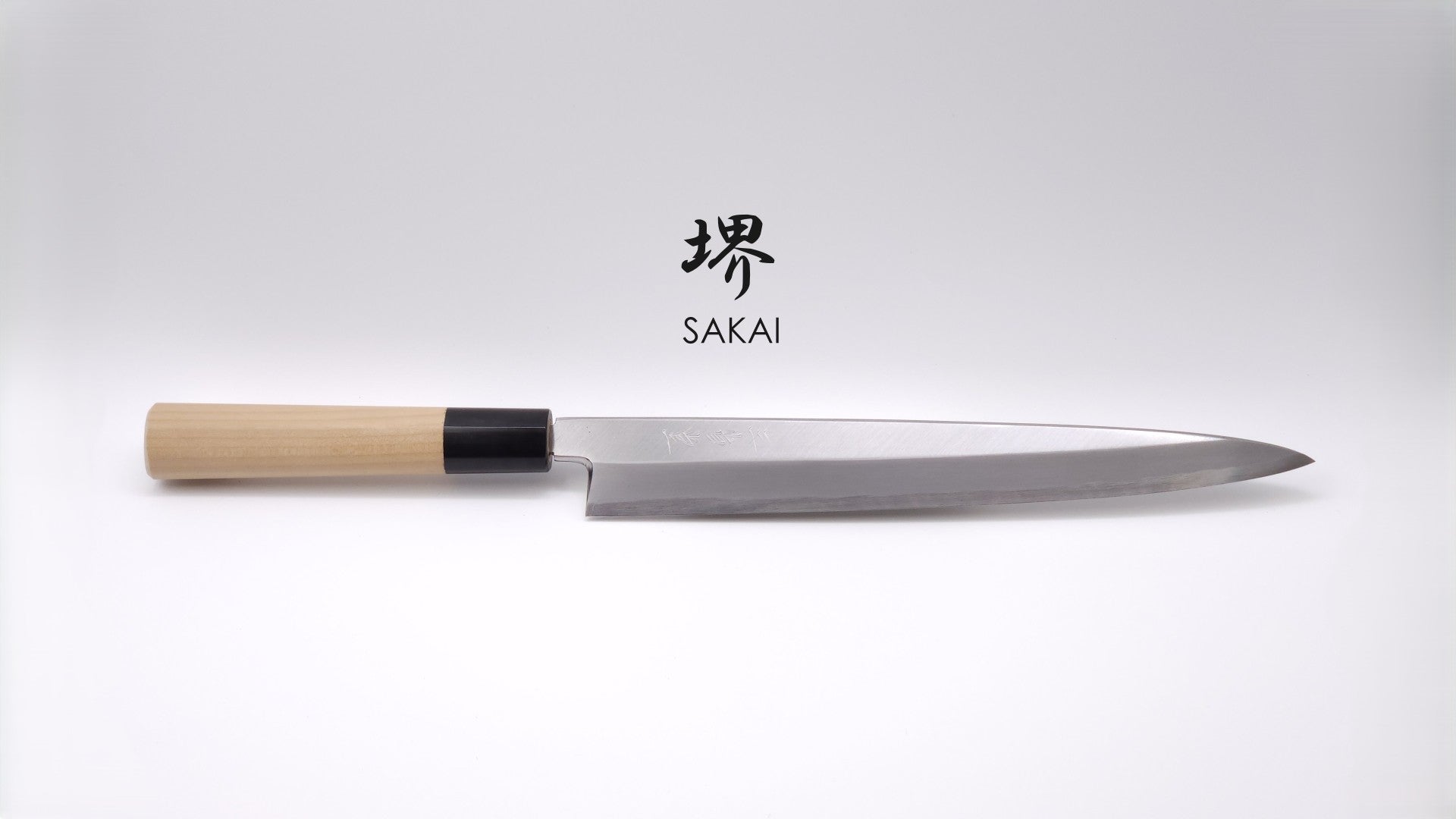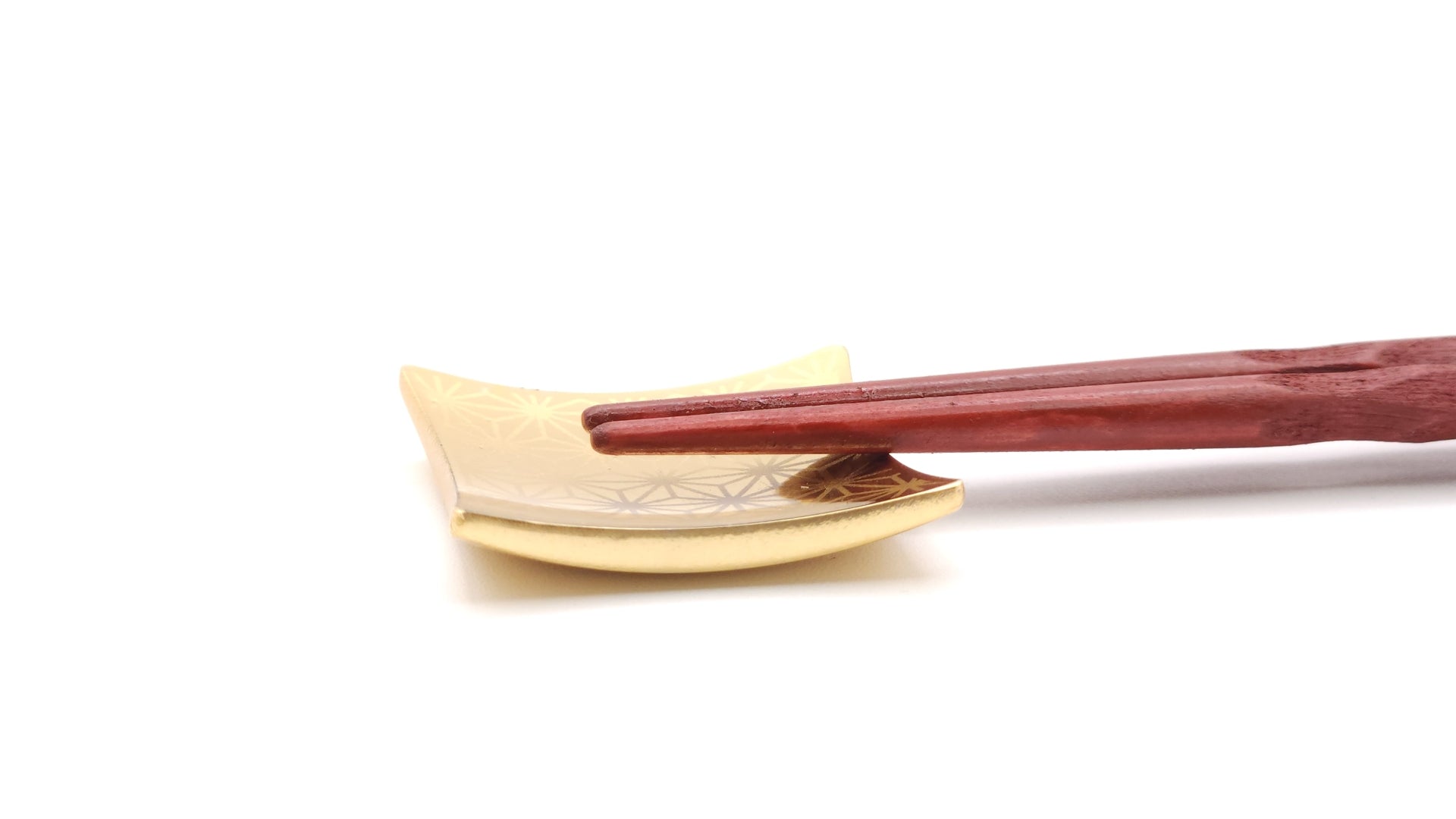
How to Choose the Perfect Knife for Fish: Deba vs. Aideba Explained
Learn the key differences between the traditional Japanese Deba (出刃) and Aideba (相出刃) knives.
This guide helps you choose the right knife for your fish preparation, whether you’re a chef or a home cook passionate about Japanese cutlery.
Understanding Traditional Japanese Fish Knives
When it comes to traditional Japanese knives designed for fish preparation, the Deba (出刃) and Aideba (相出刃) are two of the most commonly used options.
While they may look similar at first glance, each has distinct characteristics that make them suitable for different tasks in the kitchen.
Whether you are a professional chef, or a home cook interested in Japanese cutlery, understanding the differences between these two knives can help you choose the right one for your needs.
Common Features of Deba and Aideba
- The blade features a slight convex curve from the spine to the tip.
- The spine of the blade is thick, and the back of the heel usually has an obtuse angle.
- The heel is wide, tapering towards the cutting edge and ending in a pointed tip.
- Deba blades have a tall profile, which provides separation between the heel and the handle.
- This design offers multiple benefits:
- Keeps your hand and fingers safe and away from the cutting action.
- Makes the blade easier to sharpen in swift strokes over the whetstone.
Deba (出刃): The Sturdy Workhorse
Deba 150mm | Shirogami#2
The Deba (出刃包丁) is a robust, thick-bladed Japanese knife specifically designed for breaking down whole fish.
Originating from the Edo period, it remains an essential tool in traditional Japanese cuisine, particularly in sushi and seafood-focused kitchens.
Main Characteristics of Deba:
-
Blade Thickness & Weight:
The Deba has a thick spine and a heavy blade, typically ranging from 150mm to 330mm in length and 5mm to 9mm in thickness. This heft provides the necessary strength to cut through fish bones and cartilage with ease. -
Single Bevel Design:
Like many traditional Japanese knives, the Deba is sharpened on one side (usually at a 10-15 degree angle), making it ideal for precise slicing. -
Durability:
The thickness and structure of the Deba make it exceptionally durable, allowing it to handle tasks that require significant force.
Primary Uses of Deba
- Cleaning, filleting, and beheading whole fish
- Cutting through small bones and cartilage
- Breaking down poultry and other meats (without large bones)
Aideba (相出刃): A Lighter Alternative
Aideba 210 mm | Shirogami#2
The Aideba, is a variation of the Deba that offers greater flexibility and ease of use for certain tasks.
It is designed for cooks who require a lighter, more maneuverable knife without sacrificing too much power.
Main Characteristics of Aideba:
-
Thinner & Lighter Blade:
Compared to the Deba, the Aideba has a narrower blade, usually ranging from 135mm to 270mm in length. Its reduced thickness makes it easier to handle for precision cutting. -
More Versatile for Fish Preparation:
While the Aideba retains the core functionality of a Deba, it is particularly suited for filleting medium-sized fish with softer bones. Its lighter weight allows for more controlled slicing motions. -
Single Bevel Edge:
Like the Deba, the Aideba also has a single bevel edge, making it ideal for clean, accurate cuts.
Primary Uses of Aideba
- Filleting and slicing fish with more precision
- Preparing softer fish that do not require the full strength of a Deba
- Making fine cuts without damaging delicate fish flesh
Blade Thickness and Handling

Detail of single bevel Blade of Deba knives.
The Deba knife is known for its robust build, with a thickness ranging from 5mm to 9mm, while the Aideba tends to be slimmer. This extra heft gives the Deba its signature strength, making the spine and heel sturdy enough to handle serious tasks like beheading fish or cutting through small poultry bones.
You can even tap the spine with your hand to power through without worrying about damaging the blade.
Handling and Balance
When it comes to handling, the Deba’s balance point sits just past the handle, right above the choil. This placement enhances control, especially when using a pointed-finger or pinch grip.
The sharp tip is perfect for delicately slicing fish fillets, while the solid heel makes quick work of tougher jobs, like breaking through fish bones.
Key Differences Between Deba and Aideba
|
Feature |
Deba (出刃) |
Aideba (相出刃) |
|
Blade Thickness |
Thick and heavy |
Thinner and lighter |
|
Blade Length Range |
150mm – 330mm |
135mm – 270mm |
|
Primary Use |
Breaking down whole fish, cutting through small bones |
Filleting and slicing softer fish |
|
Weight |
Heavier |
Lighter, easier to maneuver |
|
Strength |
More robust, suitable for tougher tasks |
More delicate, suited for fine cutting |
How are Deba knives made
Deba knives have their roots in Japan, particularly in renowned blade-making cities like Sakai, Seki, and Echizen. Crafted by skilled blacksmiths, each knife is forged by hand, starting with heating steel blanks in a blazing forge and carefully shaping them with a hammer.
To enhance durability, the steel undergoes a cold-water treatment, strengthening the blade for precision cutting. Traditional Japanese steels like Aogami (Blue Steel) and Shirogami (White Steel) are commonly used, ensuring a perfect balance of sharpness and resilience.
For a better understanding of Japanese steels check our article: "Japanese Knives Steel types: Unveiling The Soul of the Blade.".
The forging process is repeated multiple times, refining the blade before it goes through meticulous sanding, polishing, and hand-sharpening. These time-honored techniques, passed down since the 19th century, continue to define Japanese cutlery, making each knife a testament to craftsmanship and tradition.
Which Knife Is Right for You?
Japanese knives are crafted with centuries of tradition and expertise, and both the Deba and Aideba reflect this craftsmanship.
Whether you need a powerful workhorse like the Deba or a more agile tool like the Aideba, choosing the right knife will greatly improve your efficiency and precision in the kitchen. Investing in high-quality Japanese cutlery ensures cleaner cuts, better presentation, and an overall enhanced cooking experience.
Explore our Japanese Knives Collection
FAQ: Deba vs. Aideba
Find clear answers to the most asked questions about Deba (出刃) and Aideba (相出刃). Learn which blade to choose, ideal sizes, sharpening basics, and proper care.
What is the main difference between a Deba and an Aideba?
The Deba is thicker and heavier for breaking down whole fish and cutting through small bones. The Aideba is thinner and lighter for nimble filleting and precise slicing, especially on medium fish with softer bones.
Which knife should I use for small, medium, or large fish?
Small fish often suit an Aideba for speed and control. Medium fish can use either, based on preference. Large fish benefit from a Deba for strength and stability when removing heads and working around tougher bone structures.
Can a Deba cut bones without damage?
A Deba can handle fish heads, collars, and small bones. Avoid hard impacts on thick or weight-bearing bones. Use controlled taps on the spine near the heel rather than striking on the edge to reduce chipping risk.
Is there a left-handed version of these knives?
Yes. Both Deba and Aideba are single-bevel knives, so left-handed versions exist. Be sure to choose a left-bevel model, since flipping a right-bevel knife will not perform correctly and is harder to sharpen.
What blade length should I choose?
Common ranges are 150–330 mm for Deba and 135–270 mm for Aideba. For home use, 150–180 mm Deba or 165–210 mm Aideba covers most tasks. Select longer blades for larger fish and shorter blades for tighter maneuvering.
Which steel is better, Shirogami or Aogami, and what about stainless?
Shirogami (White) offers keen sharpness and easy sharpening. Aogami (Blue) adds alloying for edge retention and toughness. Stainless clad or stainless cores reduce rust risk. Choose based on your maintenance habits and sharpening comfort.
How should I sharpen a Deba or Aideba?
Maintain the single-bevel geometry. Work the bevel at roughly 10–15 degrees, then create a light micro-bevel if desired. Deburr carefully on the ura side. Use consistent strokes and finish on a medium to fine stone for a clean cut.
How do I prevent rust and chipping?
Hand wash and dry immediately. Apply a light food-safe oil if storing longer. Use end-grain wood or soft boards. Avoid twisting through bones and never pry with the edge. Store with a saya or edge guard to protect the blade.





